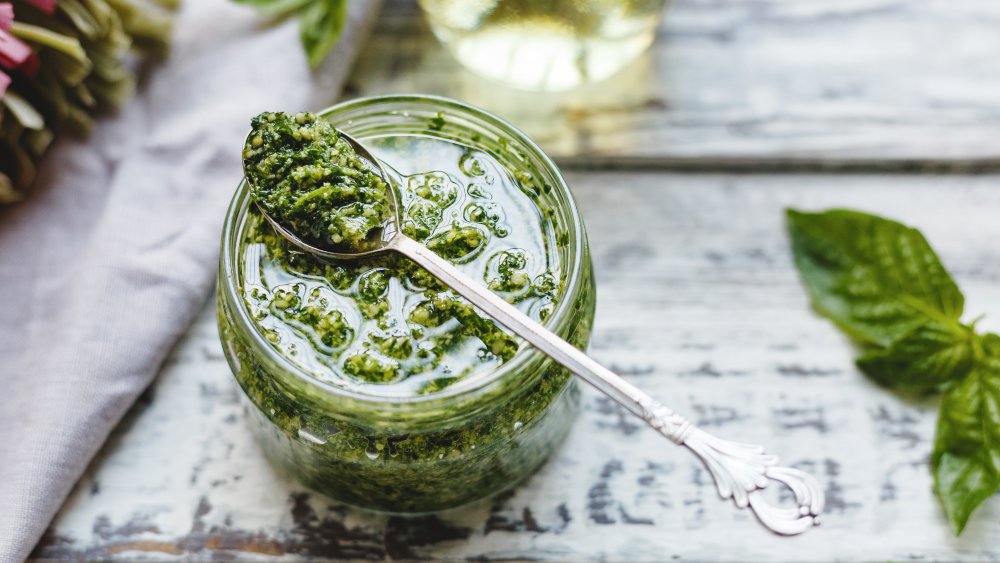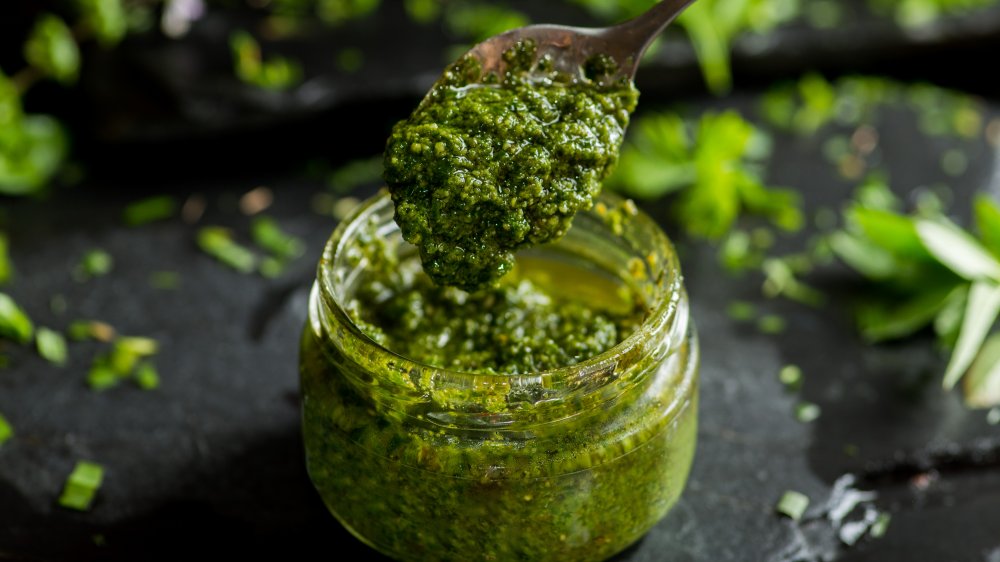The Actual Difference Between Pistou And Pesto
Those who really love herbs probably know and believe that pesto makes everything better. From pasta and vegetables to cuts of meat, the herbaceous and nutty sauce is a delicious accompaniment to tons of foods and dishes (via Food and Wine). Not to mention, pesto is full of nutritional benefits such as vitamins K and A, calcium, iron, and even flavonoids that should have good sources of antioxidants and antibacterial properties (via New York Times). While you are probably most familiar with pesto, which hails from the Italian region of Liguria, there's also a French take on the sauce, pistou.
Pistou comes from the south of France and is also an olive oil-based sauce made with basil. Though the most traditional way to make both kinds of the sauce is with a mortar and pestle and they share many of the same ingredients, there are a couple of differences between the two.
One is cheese-laden while the other includes nuts
If you know the recipe for pesto better, then you should already know it involves olive oil, basil leaves, pine nuts, garlic, and a hard cheese such as parmesan or Pecorino Romano. These ingredients are all combined with perhaps a bit of water and a pinch of black pepper or red pepper flake to form a thin paste or sauce. Pistou is essentially a pared down version of pesto (via Cracker Box Kitchen).
Pistou is made with olive oil, basil leaves, garlic, and hard cheese. This sauce, however, eliminates the nuts and increases the amount of cheese. Though various recipes will tell you to use different kinds of cheese such as parmesan, Pecorino Romano, or even Gouda, they will also tell you to use varying amounts of the cheese. Traditional pistou uses equal parts basil leaves and cheese, though. That means one cup of cheese to one cup of basil leaves. It's certainly a cheese-lover's dream pesto.
If you find yourself averse to nuts in your pesto sauce, then try making pistou. You can find and follow a recipe that best suits you. You can use as much or as little cheese as you'd like ranging from one-third of a cup according to the New York Times or to a full cup as per Food and Wine.

